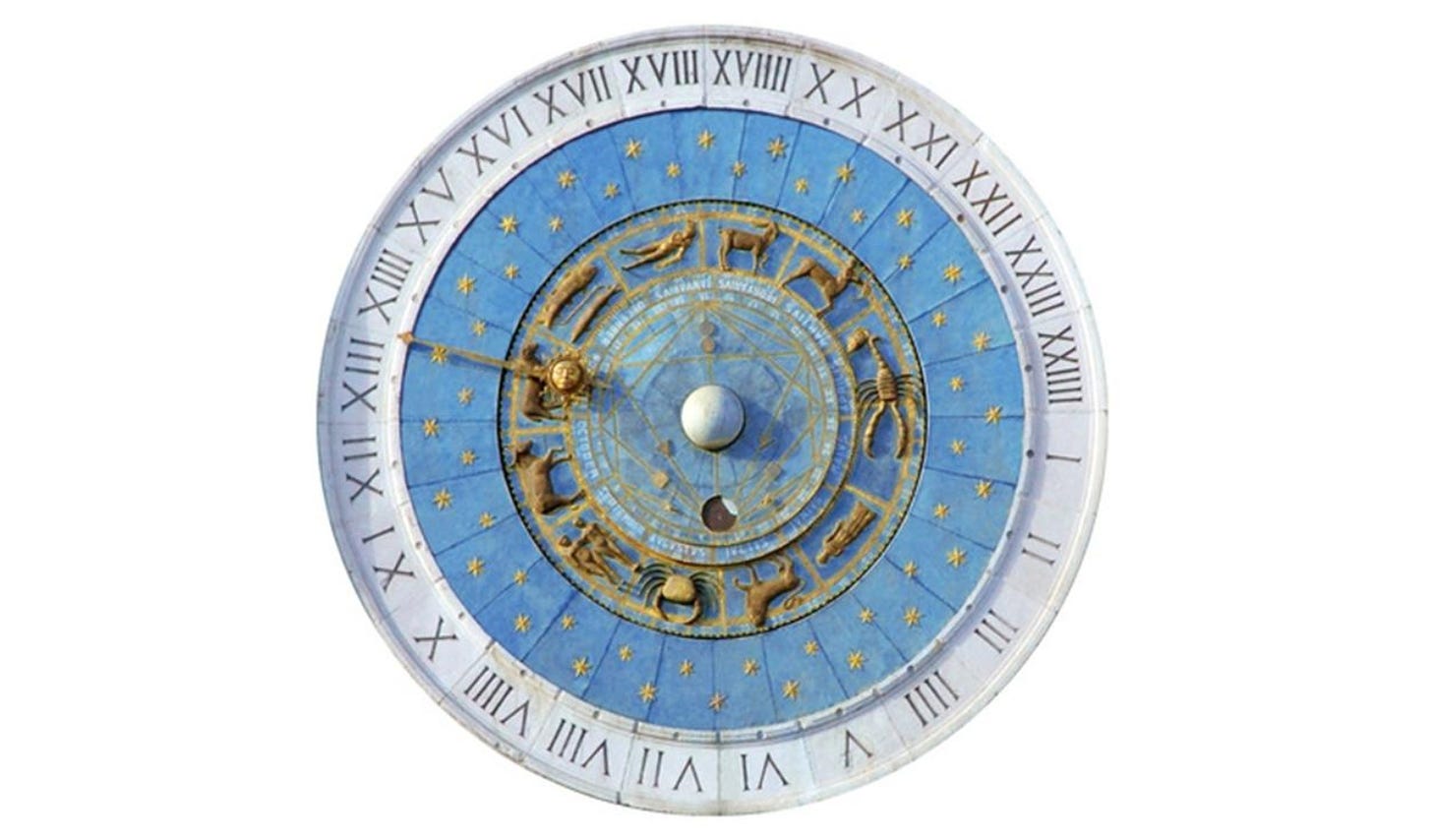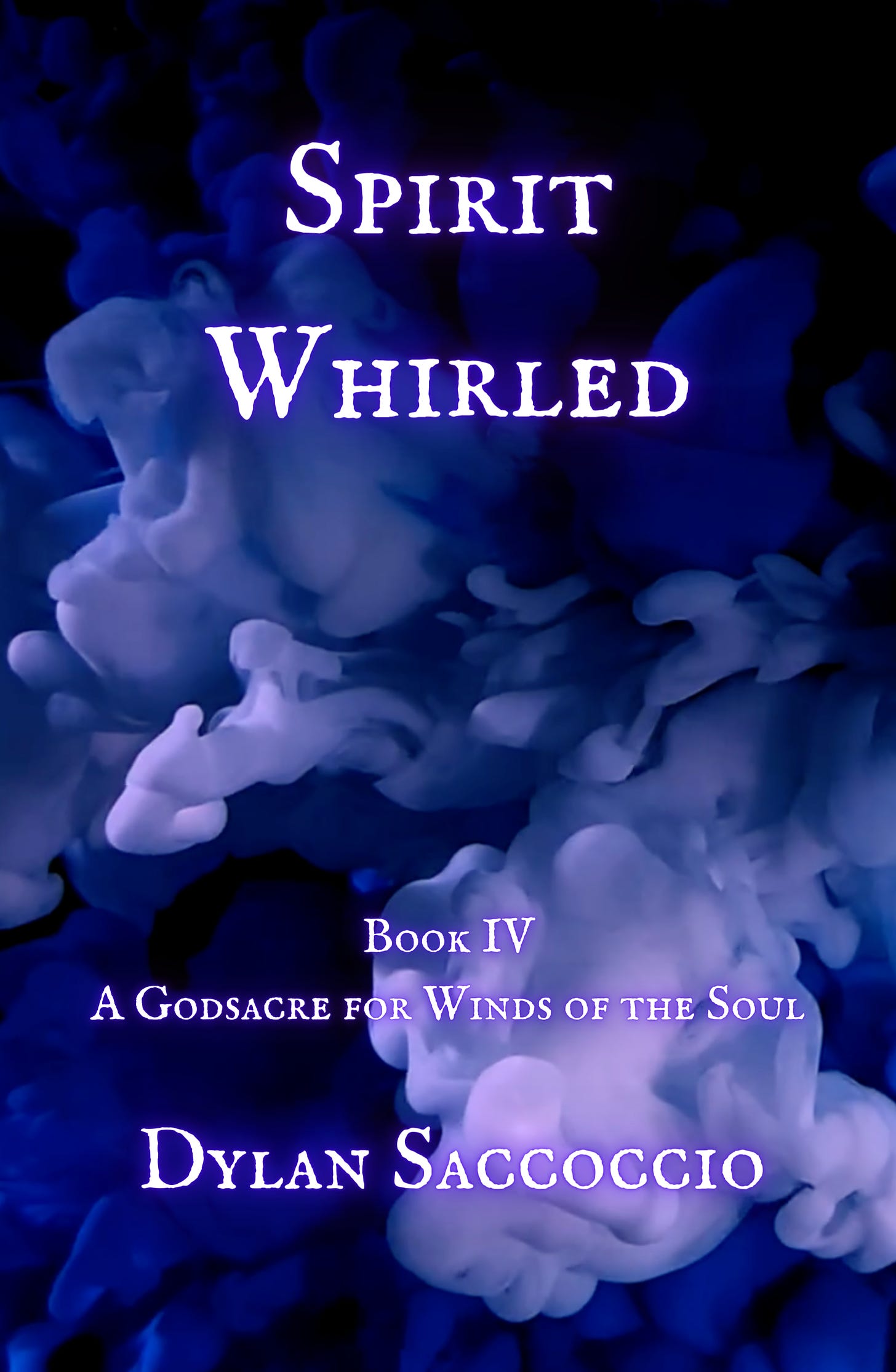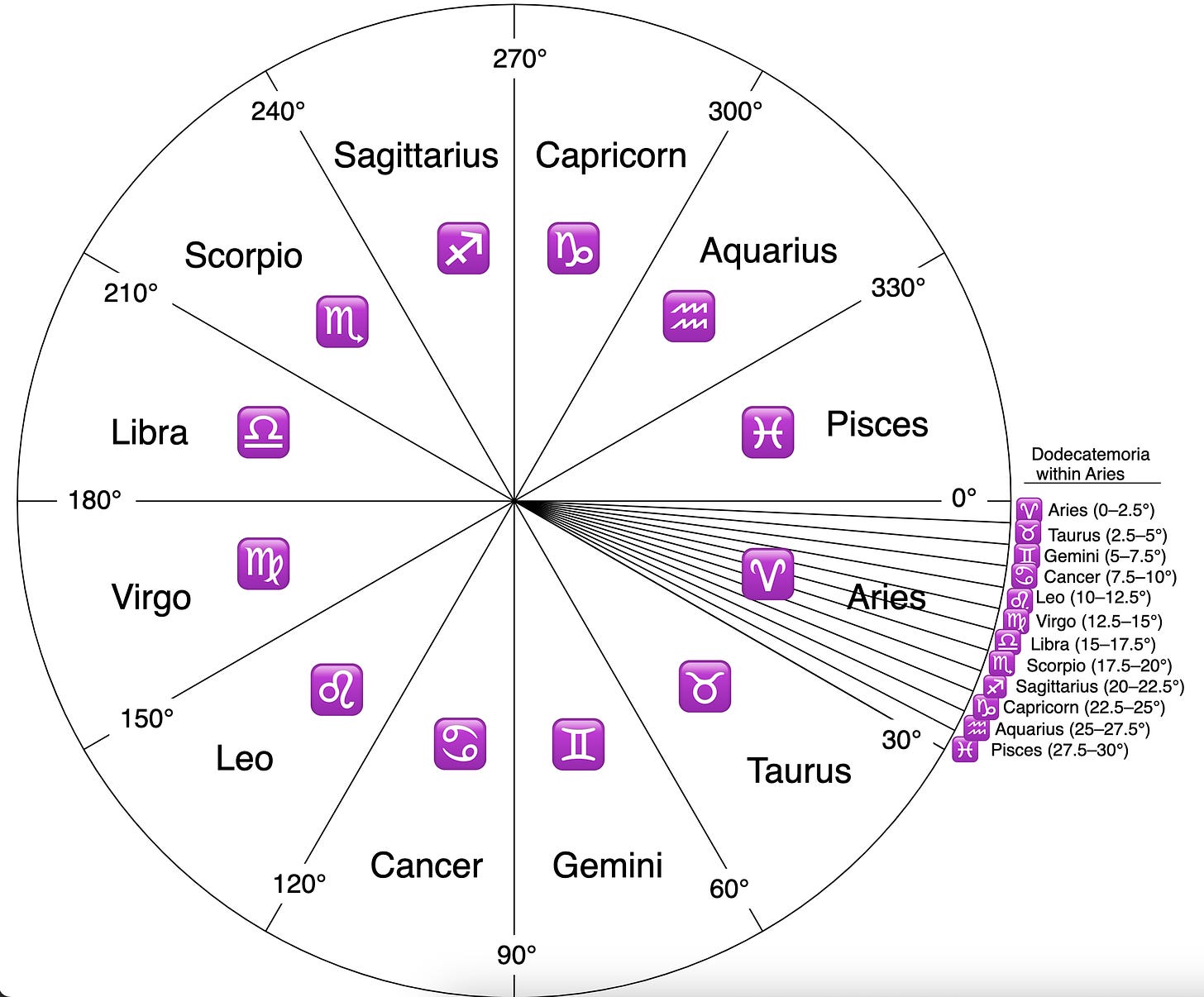Technically, you can make up whatever system you want and apply it to the cosmos. Why don’t any of you “astrologers” do that? Why do you consistently use the symbolism of the ancients, while reinventing their system and passing it off as your own, which then distorts all history and chronology of that system? The reason everything is in a state of farrago is because you’re applying new and improved methods of observation to measurements and calculations, and then you’re ascribing it to the ancients as though they had the precise technology that you utilize now. It should be common sense, but when this system of astrology (still in use today) was created, nothing you utilize for observations or measurements existed yet. Among the most obvious details that ought to be accounted for is that people only had the use of their eyes for observations. There were no fancy telescopes (as far as we can tell) nor smoked lenses to allow for looking directly at the sun.
If you haven’t read A Godsacre for Winds of the Soul (click the image), it is the ultimate book to enlighten you about the ancient universal system of priestcraft that has been used to govern all nations and formulate civilization since time immemorial, the foundation of which is astronomy (the priests are the watchers and namers of the stars) and astrology (their observations are encoded into allegories).
I wrote in Godsacre, “When numbers are alluded to in mystical texts, they usually represent a cycle or something to do with the cosmos. Osiris was killed by seventy-two conspirators, which is half the year, or 6 months, each month being divided into twelve parts, a system used in the Hellenic and Babylonian cultures (12 x 6 = 72). When seventy is used, seventy-two is likely what it represents. According to Astle, ‘The ancients frequently expressed sums by even numbers, adding what was deficient to complete them, or omitting whatever might be redundant. This mode of reckoning is often used in sacred writings, and was thence introduced into other monuments.’
“In Bishop Walton’s treatise on Hebraisms, he wrote, ‘The Hebrews are accustomed to use round numbers, and neglect the two or three units which exceed them in certain cases. They say, for example, the Seventy Interpreters, and the Council of Seventy, although the number in each case was seventy-two; and in the book of Judges we read, that Abimelech killed seventy of the children of Jerobaal, although he had but sixty-eight.’
“Whatever time of year we’re in, the sun blots out half the constellations, or six months divided into twelve parts each (72 parts for 6 months, which would be 144 for the whole year). So this could be allegorized as half of the year conspiring to kill the sun, or the sun’s effulgence kills half the constellations, or children i.e., the winter sun kills the winter constellations during the day while the summer sun kills the summer constellations during the day.
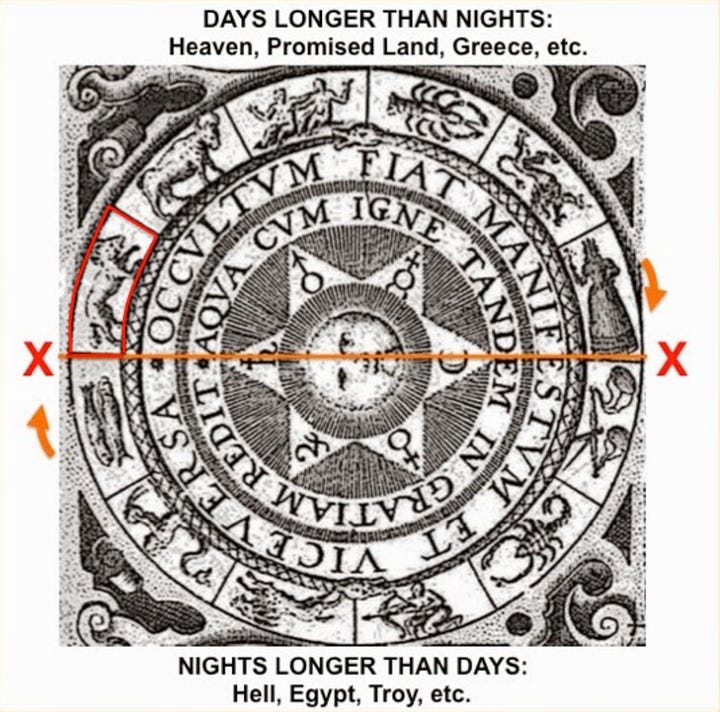
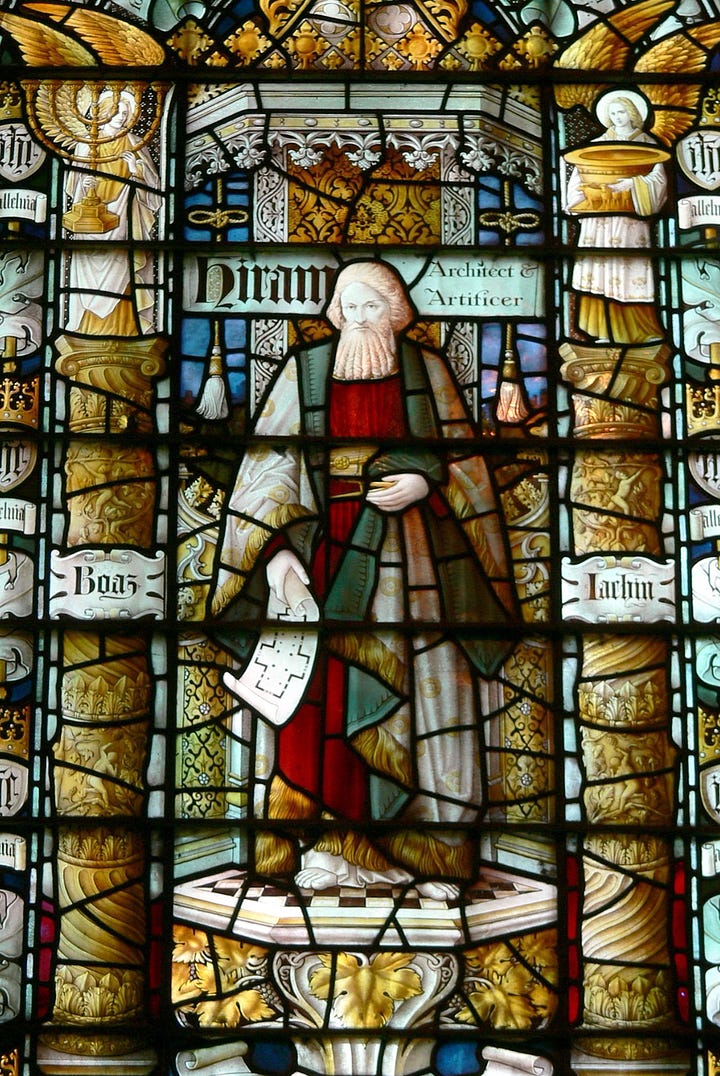
“Remember this significance of seventy, or seventy-two, for you will see it again. This subdivision of the twelve signs into twelve parts each is called dodecatemoria, each corresponding to 2.5 degrees of the ecliptic, bringing the total to 144 dodecatemoria. The pillars of Jachin and Boaz had 100 pomegranates around each of their capitals. (1 Kings vii. 20; 2 Chron. iii. 16, 17.) This fruit has a star-like flower with six leaves or rays at the top of the fruit. 6 x 100 = 600, the Neros (a period of 600 years). Seventy-two were hung around the priest’s garment. 72 x 6 = 432. 432 comes from dividing the great zodiacal or precessional year of 25,920 years by 60, and so 432 is the base of the great Indian cycles. See Exodus 28:33-35 and Exodus 39:24-26 for pomegranates and bells on a priest’s garments. Higgins wrote, ‘It seems to have been a great object with the ancient astrologers to reduce these periods to the lowest point which it was possible to reduce them, without having recourse to fractions; and this might perhaps take place before fractions were invented. Thus we find the dodecan, five, was the lowest to which they could come. This, therefore, for several reasons, became a sacred number. In each of the twelve signs of the Zodiac of thirty degrees each, they found there were six of these dodecans of five degrees, and that there were of course 6 x 12 =72, and 72 x 6 = 432, in the whole circle, forming again the base of their most famous cycle. It was chiefly for these reasons that the two numbers five and six became sacred, and the foundations of cycles of a very peculiar kind.’
“Jesus has seventy-two disciples, or half the constellations, months, and year following him around, whatever part of the year he is at in his journey. The other seventy-two, or six months, are not with him and you can see them at night. This proves Jesus is the sun. Now you know the symbolism of the College of Cardinals consisting of seventy-two people, Ptolemy having had seventy-two men translate the Pentateuch, and the seventy-two members of the Sanhedrin (though modern sources will obfuscate this by claiming seventy-one).”
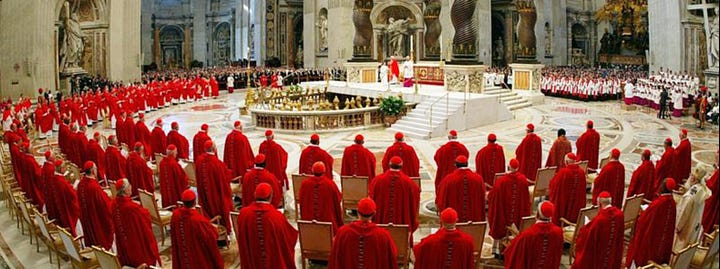
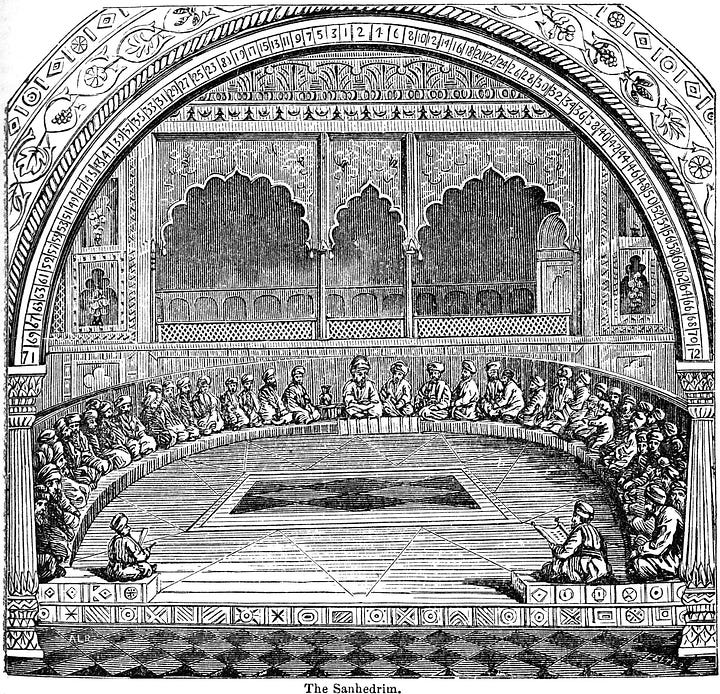
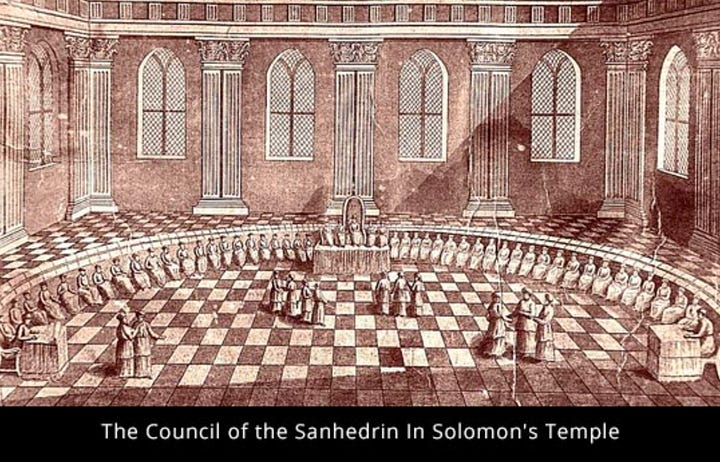
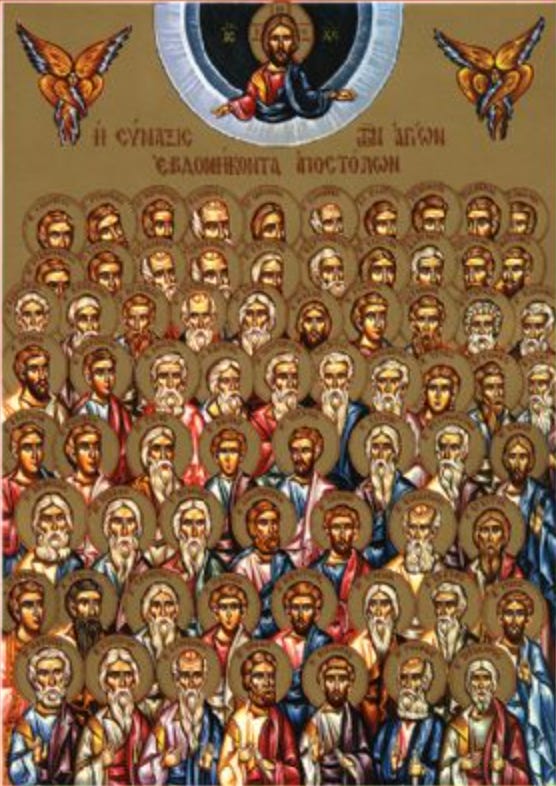
According to Hamlet’s Mill (p. 59), “The sun’s position among the constellations at the vernal equinox was the pointer that indicated the “hours” of the precessional cycle—very long hours indeed, the equinoctial sun occupying each zodiacal constellation for about 2,200 years. The constellation that rose in the east just before the sun (that is, rose heliacally) marked the “place” where the sun rested. At this time it was known as the sun’s “carrier,” and as the main “pillar” of the sky, the vernal equinox being recognized as the fiducial point of the “system,” determining the first degree of the sun’s yearly circle, and the first day of the year. (When we say, it was “recognized,” we mean that it was spelled “carrier” or “pillar,” and the like: it must be kept in mind that we are dealing with a specific terminology, and not with vague and primitively rude “beliefs.”)”
I don’t rely on modern works such as Hamlet’s Mill, however, I mention it because it is getting increasingly more difficult to find resources that aren’t defiled by modern astronomers who have continually changed the system of reckoning from the ancient one, yet all the while using the ancient system’s terms and symbolism. The ancient system reckoned the traditional age, which relied on the sign that was Lord of the Ascendant an hour before dawn. The reason this is frustrating is because modern astrologers rarely acknowledge the old system and what they have changed about it, so it’s easy to confound their new system with the old one. Most of these people are not initiated into the priesthood and have no access to their methodology. It’s also possible that reckoning the age this way is a product of the Middle Ages and not necessarily something that was done in ancient times, since they used the Neros, and everything that they prophesied about the new Ages and the Anti-christ leading up to the Crusades didn’t amount to anything.
To be clear, I think using the precision technology to reckon and document everything in the cosmos is a great idea and ought to be done by as many people all over the world as possible. However, most people don’t appreciate how the subtleties of the system’s changes over the aeons is valuable on account of it being another way to organize history chronologically, as well as discover traces of cultural diffusion.
People ask me about subjects that I’ve covered extensively in Spirit Whirled, but for those wondering about what Age we are in, I’ll include what I published in A Godsacre for Winds of the Soul for my members and how you can verify it for yourself.
Become a member to access the rest of this article. If you’ve never been a member and want a comped month to see if my work is a good fit for you, follow these simple instructions:
2. Message me ‘Dylan Substack’ only (this lets me know where you got the offer)
3. Then, in a separate message, send me your email only
Keep reading with a 7-day free trial
Subscribe to Dylan Saccoccio Newsletter to keep reading this post and get 7 days of free access to the full post archives.




